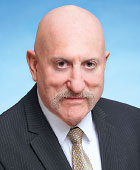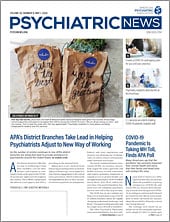The time for APA’s 173rd Annual Meeting has come and gone—but no meeting was held this year. Unprecedented? Well, apparently not. APA turns 176 years old this year, and the meeting was going to be APA’s 173rd, so we must have missed some before this one. Nonetheless, a 98.3% success rate by APA’s dodransbicentennial isn’t bad.
The last time APA did not hold the Annual Meeting was in 1945. At the 1946 meeting, Harry Solomon introduced the APA president, Karl Bowman, and said: “Due to the exigencies of the war [World War II] and the action of the Office of Defense Transportation, no meeting of the Association was held last year.” APA had started preparations for the June 1945 meeting and continued until it became evident that the meeting could not occur. APA then began work on a meeting in the fall until that timing was found to be “inadvisable.”
The progression of events for the 173rd meeting was quite similar. The Board of Trustees considered rescheduling the meeting for the end of August but decided against it due to all the uncertainties surrounding the COVID-19 crisis.
Bowman was APA president for two years. With no meeting in 1945, there was no feasible way to take a vote (a telegraphic vote not being advisable). Solomon called Bowman’s term of two years “unique.” That description speaks more to our need to celebrate individuals doing things no one has done before than it does to historical accuracy. One-year terms for APA presidents did not start until 1882, and by then nine presidents had served a total of 38 years.
The APA Annual Meeting was not canceled due to the 1918 influenza pandemic. According to the Centers for Disease Control and Prevention (CDC), the virus was first identified in the United States in military personnel in spring 1918. Apparently, the APA Annual Meeting that June had occurred before there was any awareness of the impending pandemic since influenza was not a topic of discussion at the meeting, and planning for the rest of 1918 reflected the assumption of business as usual. In fact, according to the CDC, the 1918 influenza pandemic infected 500 million people (one-third of the world’s population) and was responsible for the deaths of at least 50 million people worldwide, with about 675,000 occurring in this country. The U.S. population in 1918 was about one-third of the current population. Assuming the same rate of death, that would be 2,022,000 deaths today.
The APA Annual Meeting was not canceled in 1919 as well. It was held June 19 and 20 in Philadelphia, the city that would have hosted our 2020 meeting. Participants at the 1919 meeting, which was attended by 900 APA members, again had little to say about the influenza epidemic. Neither Harry Solomon’s presidential address nor Harvey Cushing’s annual address discussed it. The infectious disease of interest at this meeting was neurosyphilis. There were several papers on psychiatric services for military personnel, including interventions that had occurred during the war and those that would be delivered to psychiatrically disabled veterans. Members pledged to do their utmost to serve these men and women. The lasting contribution that members at this Annual Meeting made to APA was officially changing the word “insanity” to the word “psychiatry” in all APA documents.
The Annual Meeting that was canceled before the 1945 meeting was the 1861 meeting. APA members must have been notified by mail as the official announcement was recorded in volume 18, issue 1 (page 96), of the American Journal of Insanity, which appeared after the meeting was to occur. The announcement reads: “Postponement of Meeting of the Association—On account of the troubled state of the country, the Sixteenth Annual Meeting of the Association of Medical Superintendents of American Institutions for the Insane, appointed to convene June 11th, 1861, at Providence, R.I., has been postponed for one year.” The American Civil War had started two months earlier when Confederates bombarded Union soldiers at Fort Sumter, S.C., on April 12.
In volume 18, issue 4 (page 460), of the American Journal of Insanity, APA members were informed that the postponed Annual Meeting would begin on Tuesday, June 10, 1862, at the City Hotel in Providence, R.I., at 10 a.m. There were 21 members at this meeting, none from a Southern state. The secretary read the minutes from the previous meeting and made reference to the postponed meeting, saying the postponement was “on account of the excited state of the public mind caused by the violent efforts to overthrow the established government.” The president and other members wrote that they could not attend because they were caring for the Civil War wounded of their states. The president’s letter included notification that he resigned from his office. The members elected Thomas Kirkbride as president, who then served for eight years in this office, the longest serving president in APA’s history. The topics central to this meeting were another infectious disease, tuberculosis; meaningful work for those who are insane; and the problem of alcoholism in the Irish in Massachusetts. The elder statesman of this meeting was Isaac Ray.
Not holding meetings in other years was due to an entirely different reason. As we all know, the first meeting of APA took place in Philadelphia in 1844. The second meeting did not occur until 1846, apparently because no one had yet decided it would be an annual meeting. In 1846, Samuel Woodward of the Massachusetts Lunatic Asylum at Worcester convened a meeting of 20 members from nine states and one member from Canada. At the 1846 meeting, the members decided the third meeting would be two years hence. At the 1848 meeting, members decided the next meeting would be in 1849; from that time on, the meeting was held annually until the early months of the American Civil War.
This is my first column as APA president, and it is meant to be much more than a history lesson. APA has endured through two worldwide wars, one civil war, and one viral epidemic. APA members have contributed by tending to the needs of the wounded in the three wars, psychiatric casualties and nonpsychiatric casualties. In addition, APA members played active roles in meeting the needs of the U.S. population during the influenza pandemic (as well as the concurrent epidemic of encephalitis lethargica), although you would not know it from the proceedings of the 1919 Annual Meeting.
As I write this in mid-April, I, like everyone else in this country, have no idea what the extent of the COVID-19 pandemic will be and the work that lies ahead for us. There’s some value in knowing we have faced pernicious enemies before, some you can see and some you can’t. Often in psychiatry we are dealing with patients for whom the sentiment “I have seen the enemy, and it is me” is apt. This time the enemy is not us. We, however, must do our best to be part of the solution—one day, in small ways, and then again the next day. ■

